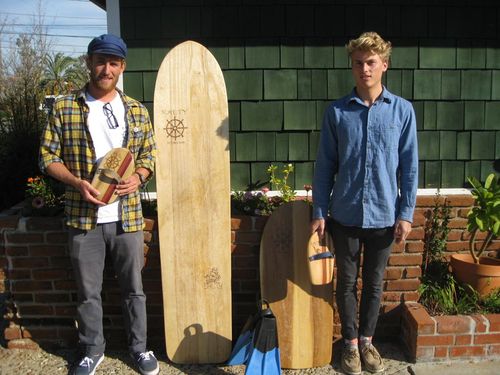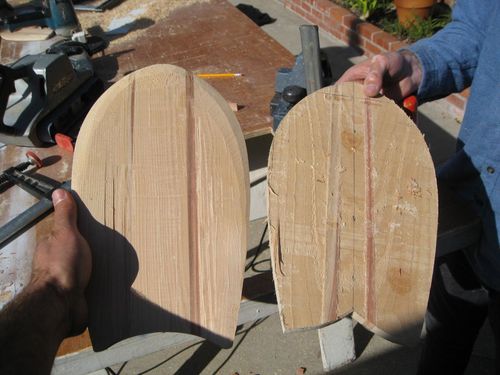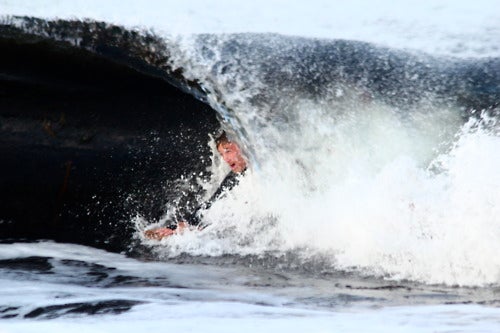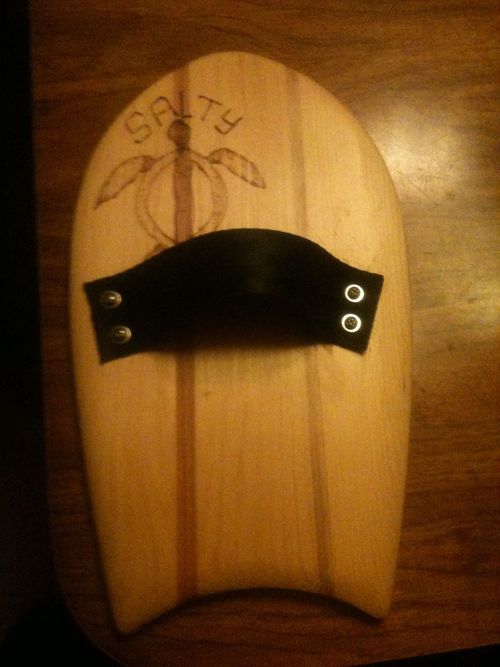It’s ironic that surfing requires being in synch with nature and its rhythms but surfing equipment is so environmentally toxic. Almost all the gear, from the trunks to the wetsuits to the boards themselves, are made from non-recyclable petroleum-based resins, foam, plastics, and neoprene. Is it possible to enjoy surfing in a more environmentally responsible way?
In the last Greener Challenge, a sailing trip to the Coronado Islands, some of the readers commented that while my sailboat was made of toxic materials it was justifiable, because it was 24 years old and still going strong. In other words, choosing and maintaining durable products, even if they're toxic, is a (relatively) less wasteful way to use those materials.�� With that in mind I was glad I had a two-year old . The suit is well made, warm, and the company doesn’t use slick high-budget advertising to try to promote a wasteful sense of obsolescence based on changing styles. ��
With my wetsuit squared away, I turned my attention to boards. I wanted options beyond the ubiquitous chunks of plastic usually seen in the lineup. That’s where Callen Busch and Hayden Lane come in. Callen and Hayden are two surf-stoked San Diego locals and life-long friends. Their company, , is known for producing amazing hand-made wooden and handplanes (alaias are a type of traditional finless surfboard and handplanes are tiny surfboards you strap to your hands to help with bodysurfing.)��

Hayden, Callen, and I were talking about the types of wood they use in their boards when the idea was born to make one out of recycled wood. After some research they invited me to their “workshop” to help make the first prototypes. They salvaged leftover wood scraps from a fence company, then glued strips of these scraps together to form the blanks we used to make the boards. Old seatbelts were the perfect material for the hand straps. ��Ultimately the only non-recycled material on the handplane was the urethane sealant and a few screws to hold the strap on.

The rough blanks before shaping. ��
Hayden and Callen have the type of friendship where they often finish each other’s sentences, so it was like having a two-headed shaper encouraging me when it was my turn to try. I wielded the power planers, grinders, and sanders with the finesse of a drunk yogi. After crudely hacking a few gouges and wavering lines into my rough blank, I handed it over to them to finish into an incredibly beautiful, fully-recycled handplane.
https://youtube.com/watch?v=lW06Y8AZkRQ%3Ffs%3D1%26feature%3Doembed%C2%A0
But we weren’t done yet. Hayden had the idea to “recycle” waves. We went to a local surf break where smaller waves often slip through the throngs of surfers paddling around their plastic boards. What those surfers saw as a weak inside wave we saw as a wasted resource waiting for a bodysurfer to drop in and enjoy. We choose waves other people rejected, wore durable wetsuits and fins, and used our hand-made wooden hand planes. Did we succeed in this Greener Challenge? ��I'll let you decide: Your comments and suggestions are welcome and appreciated. And as always, please share your own Greener Challenges!
—Ryan Levinson
��
�� 
